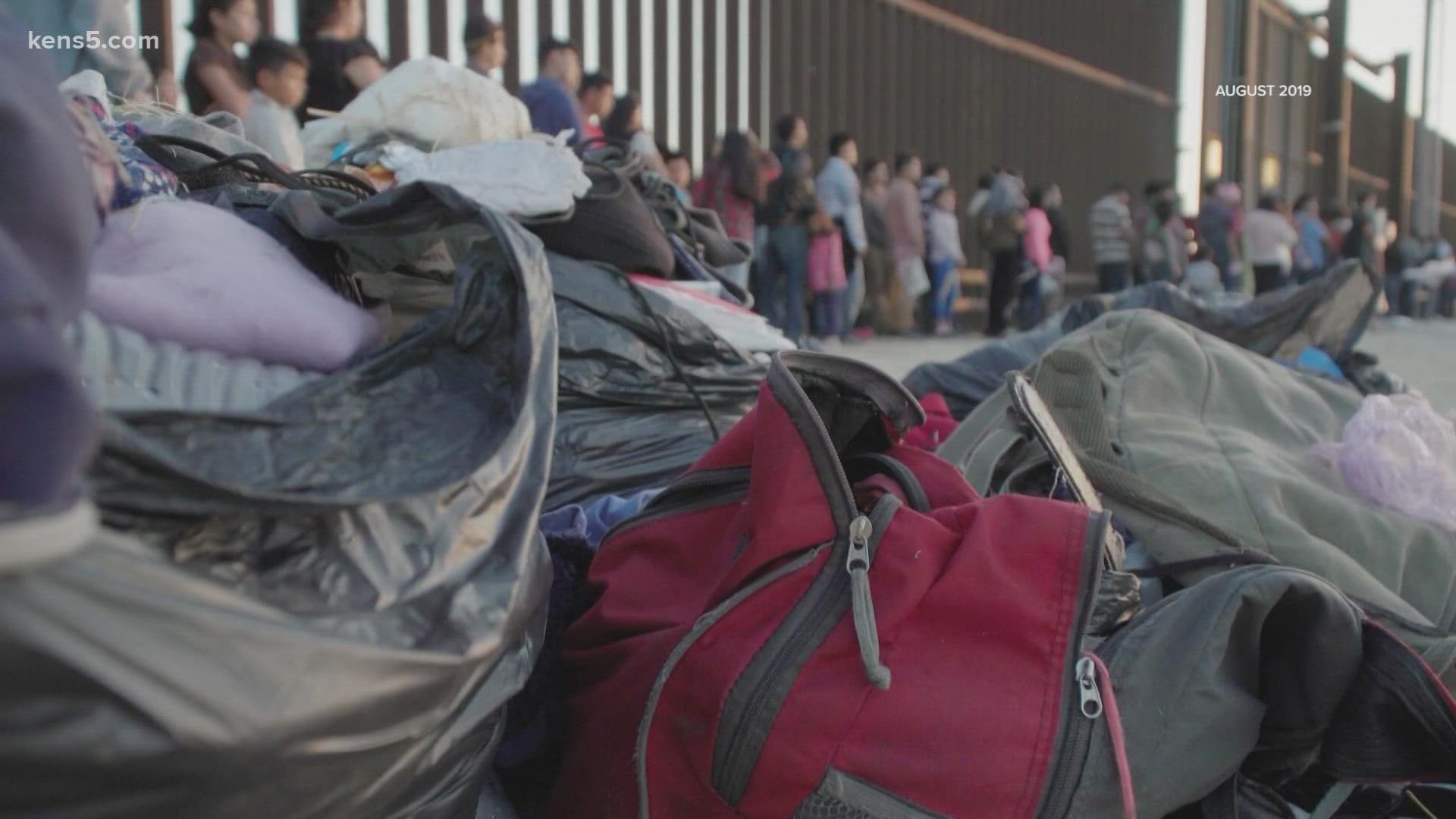MCALLEN, Texas — For two years, Border Patrol has been expelling migrants while citing the pandemic-era Centers for Disease Control order also known as Title 42. Last week, the CDC announced Title 42 would come to an end on May 23, termination of Title 42 as of May 23, saying it was no longer necessary as a means to control the spread of COVID-19.
A nonprofit that’s long worked with the migrant population tells KENS 5 it’s expecting a rise in crossings as a result. And a mayor of a city right on the border says he’s concerned the federal government doesn’t have a plan to manage what’s to come.
“I think that it is something that needs to happen because it was placed for the pandemic,” said Sister Norma Pimentel, executive director of Catholic Charities of the Rio Grande Valley, when asked about Title 42 being terminated. “I can see numbers extremely going up, because they may just all want to enter. I hope that there's a process in place to help families that are interested in asylum to be able to do that. Because that has been denied to them for a long time already.”
Sister Norma has seen it all before, the benefit of time and experience working with migrants in the Rio Grande Valley for years.
“Every single government, there's spikes where people come in great numbers. I can see that happening now as well,” she said.
Catholic Charities helps run a migrant COVID-testing and quarantine site at Anzalduas Park in Hidalgo County. At one point in 2021, the park was hosting 800 to 1,500 migrants, with the ability to house up to 2,000. While the number of people staying at the park was high months ago, Sister Norma always stressed that not everyone at the Anzalduas Park facility was COVID-positive. Families often chose to stay together, even if only one of them was sick.
Now, Sister Norma says, the number of people staying at the park to wait out the disease is very low.
“The majority of the people that are entering the country are really [COVID]-negative, they don't have the virus,” she said.
Catholic Charities also has a Respite Center to assist people released into the country. Sister Norma told KENS 5, her organization is ready for the anticipated increase in migrant numbers.
“We definitely will build capacity,” she said. “We will work with other areas as well to make sure we can manage the number of people that we need to respond to in a humanitarian way.”
Title 42 was put in place at the start of the pandemic in 2020. The CDC said the order was necessary at the time of implementation to “reduce the risk of COVID-19 introduction, transmission, and spread at Ports of Entry and U.S. Border Patrol stations, by significantly reducing the number and density of covered noncitizens held in these congregate settings, thereby reducing risks to U.S. citizens.”
In August of 2021, the CDC said it would reassess “the public health circumstances” that necessitated Title 42 every 60 days. In its most recent assessment resulting in a termination date for the order, the CDC said it considered the “status of the pandemic, including the receding numbers of COVID-19 cases, hospitalizations and deaths.”
The CDC said the range of available COVID-19 mitigation measures contributed to the agency’s decision.
The Biden administration has come under criticism from both sides of the aisle, some opposing the decision to keep Title 42 in place and others opposing CDC’s termination of it.
On March 29, U.S. Representative Tony Gonzales (TX-23), along with Senators John Cornyn (R-TX), Ted Cruz (R-TX) and other lawmakers, asked the administration, including the Department of Homeland Security and the Department of Health and Human Services, to keep Title 42 in place “until the historic level of migrant crossings at the southern border is brought down through appropriate deterrent measures.”
In a phone call with reporters the week Title 42’s termination was announced, administration officials said that Border Patrol will continue removing families and single adults who are unable to establish a legal basis to remain in the United States under the Title 8 authority, which has been used alongside Title 42.
Administration officials told reporters agencies have been planning for the eventual lifting of Title 42 for many months, and have put together strategies to handle an increase in border encounters.
Laredo Mayor Pete Saenz hopes those strategies work.
“We're the first responders,” he told KENS 5. “We see this first before anyone else.”
He said he was concerned about what increased migration will look like in his city.
“The fear is our federal government not being able to control (or) manage properly, adequately, the influx of numbers coming across,” Saenz said.
He added that federal officials have assured him they were prepared.
“They have actually commissioned more personnel and more monies, resources, whatever is required for them to meet this challenge,” Saenz told KENS 5.
Human rights advocates have long pushed to end Title 42, saying the policy violated U.S. and international law by denying access to safety for people fleeing persecution and violence. The policy also prevented people from seeking asylum.

